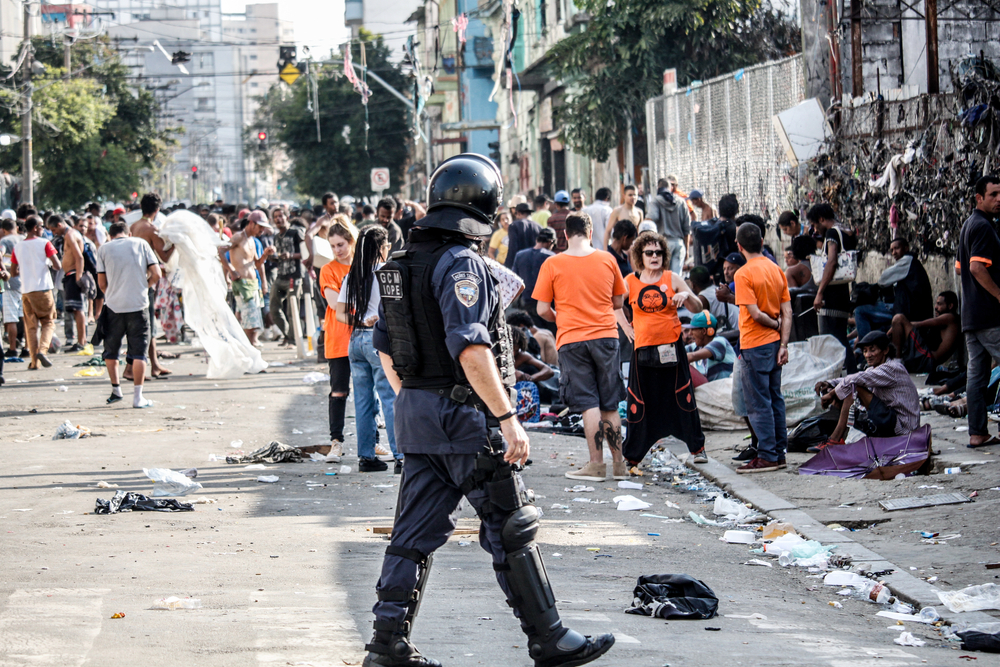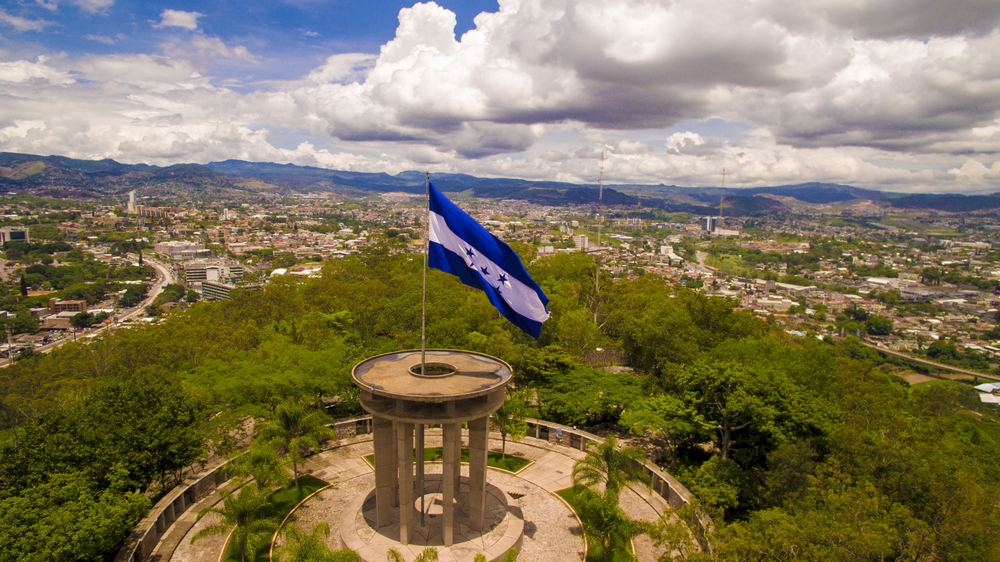Cambodia’s experience with MDMA production provides important lessons about managing the environmental repercussions of illicit drug production, which are particularly important in the wake of the UN Climate Change Conference (COP27) that occurred earlier this month.
As evident by the UNODC’s collaborative event at COP27, discussions of the intersectional nature of climate change and drug policy solutions are still fledgling, yet increasingly important to address.
Cambodia’s natural abundance of trees within the cinnamomum genus has made it a hotspot for MDMA production. The Phnom Samkos Sanctuary, in the Cardamom Mountains, is home to almost all mreah prew phnom trees. For drug producers, these trees present an excellent opportunity to produce high-grade Methylenedioxymethamphetamine (MDMA) by extracting their safrole-rich oils. This is done by uprooting the tree, dismembering, shredding, and finally boiling its roots for 12 hours.
The extraction of safrole oil damages the environment in multiple ways. Large portions of the rainforests are chopped away to make room for the construction of remote manufacturing facilities. Drug producers will then continue deforesting the region to fuel the large vats used to boil the tree’s roots. Furthermore, oil has been known to spill into surrounding streams, which pollutes Cambodia through the Mekong and Tonle Sap rivers. David Bradfield, an adviser to the Wildlife Sanctuaries Project of Fauna and Flora International (FFI) states: “There are frequently dead fish and frogs floating in the streams near these distilleries”, which is believed to impact the livelihoods of 12,000 to 15,000 people.
As part of a mission to crack down on MDMA usage and to limit the environmental damage from its production, the UN, Europe and Vietnam banned the production and trade of safrole oil in 1999. They were followed by China in 2004, altogether contributing to an acceleration of the industrialisation of Cambodia’s MDMA trade. At its peak in 2006, FFI estimated that 75 sassafras (a plant containing high amounts of safrole) oil distilleries operated in the Phnom Samkos Sanctuary.
Cambodia would eventually follow the international pattern, banning the production and trade of safrole oil in 2007. This invited an intense crackdown that climaxed with the destruction of 5.7 tonnes of safrole oil in 2009, which were estimated to have a potential to produce 44 million ecstasy tablets, at a supposed market value of $1.2 billion.
Cambodia’s crackdown impacted the international supply of pure MDMA, encouraging a turn towards other viable alternatives. Underground chemists came up with anethol oil to produce paramethoxyamphetamine (PMA) or paramethoxymethamphetamine (PMMA). It is chemically similar to MDMA in that is a stimulant that holds hallucinogenic properties, but it has some alarming effects. PMA and PMMA are both absorbed slower, meaning that individuals taking them can wrongly believe their drugs haven’t worked, encouraging them to increase their dosages.
“They block the actions of the brain enzymes that offset the desired effects of serotonin and dopamine release that PMA/PMMA produce. This then massively accentuates their toxicity as the brain can’t compensate for the increase in serotonin so users can develop serotonin syndrome. This is a toxic reaction that elevates body temperature to a dangerous, and in some cases lethal, level,” explained David Nutt, head of the charity DrugScience.
The fall in MDMA production directly led to an upsurge in PMA and PMMA consumption. In 2013, 29 people’s death in the UK and Ireland were attributed to PMA or PMMA usage. Reports of these deaths have now “virtually disappeared” with improvements in MDMA sourcing. In countries like the Netherlands, PMA and PMMA usage was not a problem because of the effective rollout of national ecstasy testing systems, which have been in place since the 1990s. This international crackdown on MDMA supply is not actually stopping drug use, but making the products increasingly dangerous to unaware consumers.
Additionally, by making safrole oil production and trade illegal, the Cambodian Government challenged drug producers to continually move their businesses, causing further destruction. This is summated by Kendra McSweeney who explains that punitive measures create a “…cycle of eradication, relocation, boom, eradication, and relocation…”. Drug cultivation is not stopped, only relocated, causing further ecological damage. This displacement effect is seen across the world, where drug producers destroy their surrounding ecosystem to evade law enforcement.
In Cambodia, the government continues to herald its large drug busts as victories within the war on drugs, while in reality the market is only temporarily interrupted. As explained by the UNODC, the reduction in safrole oil production has meant they are “increasingly targeted for the illicit manufactur[ing] of synthetic drugs”. This has contributed to persistently high levels of drug production, increased drug usage, and to more drug-related sentencing, leading to overcrowding in prisons.
The Global COP stage
This article exemplifies the need to rethink crackdown policies and begin engaging more internationally when coordinating responses to drugs in the interest of public health and the environment. COP would be a perfect stage to begin this global process.
The UNODC's involvement in COP27 represents an important acknowledgement that drug policies require international cooperation and have detrimental impacts on the environment. On the 11th of November, the UNODC co-organised an event with the World Wildlife Fund on “Environmental crime-biodiversity-climate nexus” alongside a publication of their collaborative report “Crimes that Affect the Environment and Climate Change”. The talk included Johan Bergenas, WWF’s senior vice-president of oceans, Monica Medina, Assistant Secretary for Oceans and International Environmental and Scientific Affairs, Dyeke Rogam, Deputy Director of Norway’s International Climate and Forest Initiative, and Ghada Waly, UNODC Executive Director.
The event began with a video entitled “Crimes that affect the environment” in which Jorge Rios, Head of the UNODC Environment Team states: “…criminal justice needs to be seen as one of the components of any solution… to address climate change…”. The narrative fed into the feel of the conference, whereby the panellists discussed how crime and, by proxy, drug production is damaging the climate. Dyeke Rogam talked of the “convergence” of crime whereby criminal businesses like “drug trafficking” overlap with crimes that more knowingly affect the environment like poaching, which is seen in Cambodia’s Phnom Samkos Sanctuary. Additionally, Ghada Waly discusses the need for a response of international cooperation to help deal with "transnational organised crime”. Again, the situation in Cambodia would welcome this. The actions of surrounding countries intensified Cambodia’s experience and their problems around managing drug supply must be shared with countries that fuel the demand.
Although the event importantly missed key concerns that express significant room for improvement. The war on drugs narrative makes itself known through continual references to “criminal justice”. As expressed by Sweeney and the discussions of Cambodia, coordinating a drug policy around punitive measures further damages the environment and the health and well-being of people.
Going forward the UNODC must use COP events to continue their messages of international cooperation and the importance of climate-crime nexus, whilst also acknowledging the failings illustrated in Cambodia’s MDMA crackdown.


